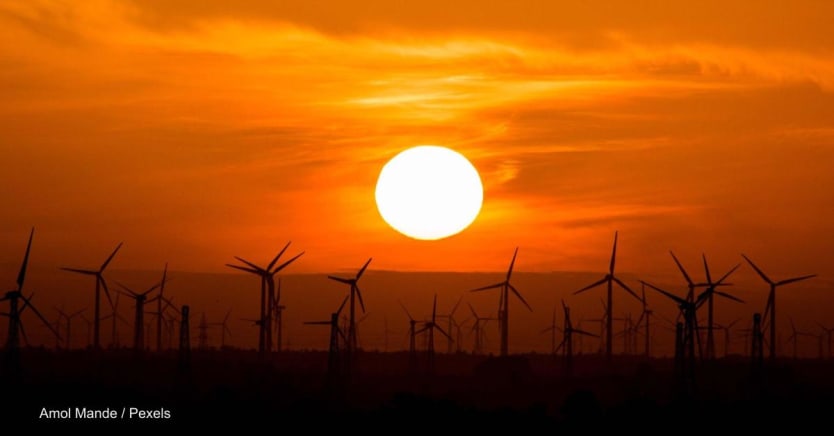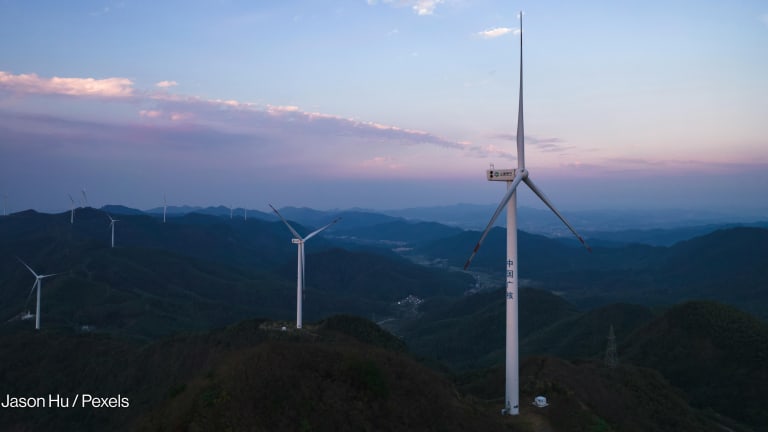
The past few months have, yet again, seen alarming trends and some unprecedented events when it comes to global climate. The Northern Hemisphere has just seen its hottest summer on record, with wildfires in multiple countries, while other parts of the world have been hit by intense storms and flooding.
And despite the broad global commitment to the terms of the Paris Agreement, the world is off target to meet its climate goals, according to a new United Nations report that calls for greater ambition and an acceleration of action on climate change.
A major issue is that financing is falling short of what’s required to avert disaster. International flows of finance for climate adaptation are, for example, up to 10 times short of what’s required and the gap is expanding, according to a report by the U.N. Environment Programme from late last year.
But while time is running out, moves are at least afoot to begin redressing the balance. The European Investment Bank, for one, has been stepping up its financing in the past few years in recognition of these requirements. “There’s a need to address these impending crises with some urgency beyond what we’ve been doing in the past,” said Peter Anderson, a senior climate change specialist at EIB. “That has really created quite a change in the focus of the bank.”
In the run-up to the annual Climate Week event in New York City this month, Anderson spoke to Devex about what’s needed in environmental financing, how to make sure green projects are really sustainable both now and in the long run, and how EIB has been ramping up its activity to help unlock new resources for the climate fight.
This conversation has been edited for length and clarity.
Global investment in climate and environmental action is currently falling short. What’s the European Investment Bank’s role in changing this scenario?
We recognize that significant volumes of investment are needed to tackle these environmental and climate crises beyond what’s already there. That’s why in 2019 our board decided to have a step change in investment levels, approving new ambitious commitments, followed a year later by a plan to achieve these commitments in its Climate Bank Roadmap for 2021 to 2025.
2020 represented a key moment in positioning the EIB as the EU’s climate bank, and saw us increase our targeted share of investment toward climate and environment financing from at least 25% previously to exceeding 50% annually by 2025. We’ve already made good progress on this, reaching 58% last year. We also outlined our aim to support €1 trillion of green investments this decade.
There will also be a need for a focus on greater finance for climate change adaptation, with EIB’s publication of its first dedicated Climate Adaptation Plan in 2021 reflecting this as a core issue.
In early 2022, meanwhile, we established EIB Global as a specific wing to the bank to give renewed focus to financing low- and middle-income countries outside the EU, where over €4 billion of green financing was provided last year. We’d already been working outside the EU for many years, but there was a recognition that things needed to be done differently. Setting up a dedicated arm of the bank to develop structures and partnerships more appropriate to the needs of lower-income countries was seen as the best option to deliver more impact.
What measures does the bank have in place to ensure that its activities and investments are sustainable in the long term?
Opinion: Revamping global finance to close the climate finance gap
The Paris summit in June emphasized the need to revamp the global financial system to meet 21st-century challenges and close the climate finance gap. European Investment Bank’s vice president Ambroise Fayolle explains the EU bank’s response.
One commitment we made was that we would align with the Paris Agreement on climate change in all of our activities from 2021. This means we’re not just looking at the 50% of our financing that is green (i.e. making a substantial contribution to climate and environmental goals), but that we need to make sure we’re not doing harm to the Paris climate goals in all other financing and other activities of the bank.
We also have safeguards in place through our Environmental and Social Sustainability Framework, including Environmental and Social Standards, which were revised in 2022. These ensure that projects are sustainable across the full range of environmental and social factors throughout their life cycle.
What other means are in place to ensure that reporting on climate and environment is robust and reliable?
We’ve been working with other multilateral development banks, or MDBs, for over a decade now on climate finance-tracking methodologies, to have consistent approaches for reporting, including in our joint MDB climate finance reporting each year.
We have strong internal quality assurance processes in place to check that we’re reporting information on the climate and environment correctly against sound methodologies. This includes robust approaches for determining what’s classified as green financing, undertaken on a case-by-case basis looking at the specific details of each project.
In addition, we have an external audit each year on our Sustainability Report. This looks at key data published, including our green finance numbers, and the carbon footprints of our projects, to provide assurance on the published information. Having that external scrutiny of our reporting is vital, helping us to continuously improve because auditors will help identify areas that require attention. We’re also being transparent in our green finance reporting by publishing at project level.
How do you define what ‘green’ means, and how important is it to get this consistent between countries and organizations?
We started to incorporate the EU taxonomy for defining what green is in 2021, and we’re gradually introducing that into our green finance definitions.
One of the challenges around green finance is having consistent definitions, which is why I think the EU taxonomy is an important development. EIB has been a member of several workgroups on the development of this classification tool, including the current EU Platform on Sustainable Finance. The EU taxonomy aims to provide a common language for green activities and finance, avoiding greenwashing and providing investor confidence, thereby supporting greater investment.
We’re now also seeing other taxonomies being developed around the world, but a potential challenge will be ensuring consistency between them.
On this point, we’re an observer to the International Platform on Sustainable Finance, or IPSF. This was set up by the EU a few years ago and has different countries around the world involved in looking at ways to develop sustainable finance policies. In particular, the IPSF has a focus on the interoperability and compatibility of taxonomies and what should be some common principles. Going forward, I think that sort of initiative will be critical to getting some minimum consistent approach and thus improving transparency for investors.
The theme of this year’s Climate Week in New York is ‘We Can. We Will.’ What does this message mean to you and EIB, and what do you hope will come out of discussions at the event?
From my point of view, there are a few areas that warrant particular focus. One is around the mobilization of private sector investment, which is critical because we can’t rely just on public money to meet the huge investment needs needed to address the challenges faced.
As a public bank, we have a role to help mobilize that funding. We can do that in different ways, including limiting our financing to a maximum of 50% of project costs, to encourage co-financing of projects with the private sector, but also through measures like advisory support to increase capacity within the private sector to help organizations develop approaches for green finance. EIB is involved along with other public banks in the Global Green Bond Initiative which is a great example of how to encourage the flow of private capital into climate and environmental projects in LMICs. We also support commercial banks in accelerating their green finance — and in fact our Green Eligibility Checker tool just won a GlobalCapital award.
Another need is putting a focus on hard-to-abate sectors. Globally, we have technology solutions for electricity generation and some forms of transport, for example, but we really need to speed up the development of innovative mitigation solutions for heavy industry, aviation, and shipping.
It’s clear that we have to increase our ambition, scale up green finance dramatically, and have more impact through that finance. The need for ambition and transformative finance is key, as well as having the right frameworks, tools, and systems to ensure that we’re channeling finance to where it needs to go, and monitoring and reporting on commitments and actions, to ensure that they’re actually being delivered.








